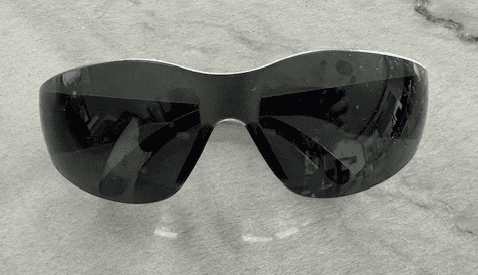Safety glasses are protective eyewear designed to shield the eyes from hazards such as flying debris, chemical splashes, and harmful radiation. They are essential for DIY enthusiasts, construction workers, and anyone involved in activities that pose a risk to eye safety. These glasses typically feature impact-resistant lenses and sturdy frames, ensuring both comfort and durability during extended use.
History
The history of safety glasses dates back to the early 20th century when industrialization brought about increased awareness of workplace safety. The first safety glasses were introduced in the 1900s by Garrett Morgan, an inventor known for his work on traffic signals and gas masks. Initially designed to protect workers in manufacturing and construction industries, safety glasses have since evolved to meet the diverse needs of various professions, including medical, laboratory, and DIY enthusiasts.
Types of Safety Glasses
- Impact-Resistant Glasses: Designed to protect against flying debris and particles.
- Chemical Splash Goggles: Provide a seal around the eyes to protect from chemical splashes.
- UV Protection Glasses: Shield the eyes from harmful ultraviolet radiation.
- Laser Safety Glasses: Protect against the intense light and radiation produced by lasers.
- Prescription Safety Glasses: Combine vision correction with eye protection.
Safety Glasses Key Features
- Impact Resistance: Lenses made from polycarbonate or similar materials.
- Anti-Fog Coating: Prevents fogging to maintain clear vision.
- UV Protection: Blocks harmful ultraviolet rays.
- Adjustable Fit: Ensures comfort and a secure fit for various head sizes.
- Side Shields: Additional protection from peripheral hazards.
- Scratch Resistance: Durable lenses that resist scratches and abrasions.
Choosing the Right Safety Glasses
Selecting the appropriate safety glasses involves considering the specific hazards of your DIY projects. Assess the risks of flying debris, chemical splashes, or UV exposure. Ensure the glasses meet relevant safety standards, such as ANSI Z87.1 in the United States. Comfort and fit are also crucial, as poorly fitting glasses can be a distraction and reduce effectiveness.
Recommendations
Proper Use and Techniques
To maximize protection, wear safety glasses consistently during all potentially hazardous activities. Ensure a snug fit, with the frames sitting comfortably on the nose and ears. Regularly inspect the glasses for damage, and replace them if any cracks or scratches appear. Combining safety glasses with other protective gear, such as helmets or face shields, can offer additional protection in high-risk environments.
Maintenance and Care
Maintaining your safety glasses prolongs their lifespan and ensures consistent protection. Clean the lenses with a soft, lint-free cloth and a mild cleaning solution to avoid scratching. Store the glasses in a protective case when not in use to prevent damage. Regularly check for wear and tear, and replace any worn-out components to maintain optimal performance.
Safety Tips
- Always wear safety glasses in hazardous environments.
- Ensure a proper fit to avoid gaps in protection.
- Combine with other protective equipment as needed.
- Regularly inspect and maintain the glasses.
- Replace damaged or worn-out glasses immediately.
Conclusion
Safety glasses are a crucial component of personal protective equipment for DIY enthusiasts and professionals alike. By understanding the different types, key features, and proper usage, you can ensure your eyes are well-protected during various activities. Regular maintenance and adherence to safety tips further enhance the effectiveness of safety glasses, making them an indispensable tool in promoting eye safety.


